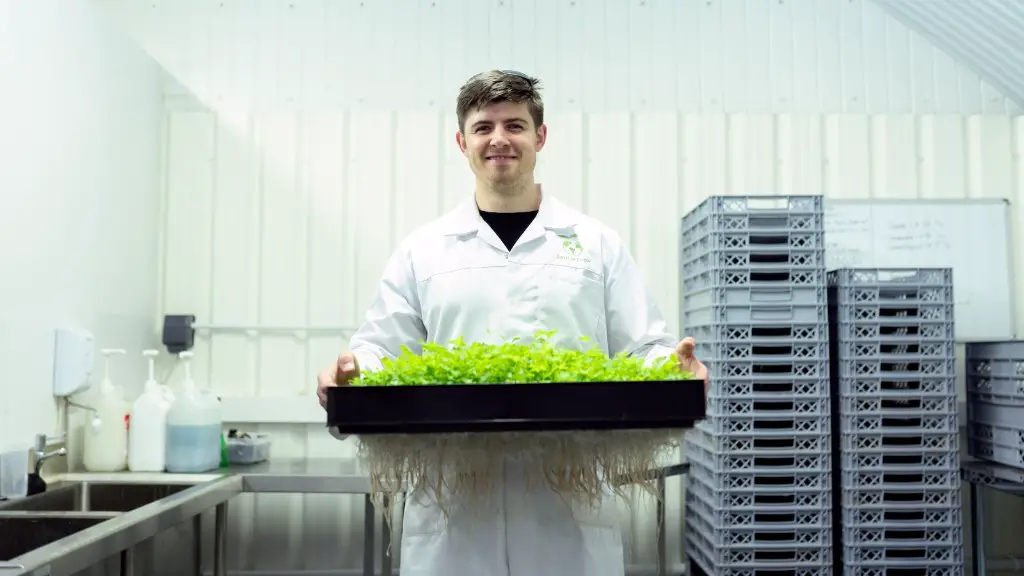Animal agriculture employs conditioning as a way of managing and manipulating the behaviour of animals in a farming environment. Generally, conditional reinforcement, also known as operant conditioning, is used in animal agriculture to reward positive behaviour and punish, or at least ignore, negative behaviour. This is done by introducing conditioned stimuli that teach animals how to act and how to obtain a positive reward. Examples of conditioned stimuli and reinforcement commonly used in animal agriculture include environmental stimuli, such as whistles and clicks, or food rewards and punishments, such as flavour enhancers and water restrictions.
Operant conditioning is used to condition animals to socialize effectively with their peers and handlers, for certain tasks like milking, and for fear reduction. For example, when it comes to fear-reducing, animals can be conditioned through a process known as desensitization, which involves slowly introducing stimuli, such as people and loud noises, until the animal is confident enough to not react negatively. Furthermore, techniques, such as positive reinforcement, are employed to encourage desirable behaviours, such as walking through a chute or entering a transport truck. In addition to these, shaping techniques are used to break down complex tasks into a series of smaller, achievable goals that the animal learns to complete with the help of a reward.
Furthermore, in order to ensure the safety of handlers, condition-based protocols are regularly used to ensure that livestock are responsive and cooperative. Specifically, measures, such as headgate slots, handling stock with flags and teaching the animals to move calmly, safely and predictably are employed. In addition, handlers employ condition-based strategies to teach the animal to stand still for veterinary examinations, such as vaccinating and hoof care.
Animal agriculture also utilizes aversion-based conditioning to decrease animal’s reactivity and aggression. For example, aversion-based conditioning uses bad experiences, or punishments, to decrease the occurrence of negative behaviours. This means rewarding desirable behaviours with positive reinforcement and punishing the undesirable behaviour with an unpleasant consequence, such as an electric shock. Aversion-based conditioning is widely used to discourage animals from exhibiting undesirable behaviours, such as fighting and aggression, or being disruptive. It is important to note, however, that this type of conditioning should be used only as a last resort since it can be detrimental to the animal’s welfare and well-being.
In conclusion, conditioning is widely used in animal agriculture to effectively manage the behaviour of animals in farming environments. Through the use of operant conditioning, aversion-based conditioning, and condition-based protocols, handlers are able to more efficiently and effectively manage the behaviour of their livestock. While its use can be beneficial for reducing animal fear, aggression and disruption, it is important to note that conditioning should be used only as a last resort and with caution.
Desensitization
When it comes to fear-reducing, desensitization is a specialized conditioning process used to condition animals to become more responsive and cooperative with their handlers. Through desensitization, animals can be slowly exposed to stimuli, such as people and loud noises, until they are no longer scared or reactive. Over time, desensitization helps animals to become more comfortable and confident in the presence of their handlers and unconventional stimuli. In essence, desensitization builds a bridge that helps animals learn to tolerate or even enjoy encounters with people and noises that would previously be perceived as aversive or scary.
Desensitization has become a prominent technique used in animal agriculture because it facilitates a safe and effective method of training animals to respond positively to stimuli they would otherwise avoid or fear. Unlike aversion-based conditioning, it does not use punishments and, instead, relies on regular practice, rewards, and repetition. It is also a low-stress method, as it can be performed in short bursts and at the animal’s own pace. Furthermore, it produces results that are lasting and more reliable. Therefore, desensitization is now widely used in animal agriculture as a way of helping animals become more comfortable and less fearful in their environment.
Overall, desensitization is an important technique used to help animals become more relaxed and trusting in their environment. Through the gradual introduction of positive stimuli, such as people and noises, animals can be taught to respond to environmental stimuli without becoming frightened or aggressive. As a result, desensitization is a safe and effective way to condition animals that is used widely in animal agriculture.
Positive Reinforcement
Positive reinforcement is a common conditioning tactic used in animal agriculture to encourage desirable behaviours, such as walking through a chute or entering a transport truck. This technique involves rewarding animals with positive stimuli, such as edible treats and verbal praise, for displaying desired behaviours. This way, animals tend to repeat behaviours that have been proven to be rewarding. Generally, it is implemented through the use of treats and rewards and is meant to be an enjoyable experience for the animal.
Positive reinforcement in animal agriculture has particular benefits for training animals. Firstly, it is a low-stress technique that helps to build trust between the handler and animal. Secondly, it is a rapid and more effeicient technique that produces results more rapidly than traditional training methods. Lastly, by rewarding animals with positive stimuli for completing tasks, animals are encouraged to repeat behaviours. Thus, conditioning with positive reinforcement is an effective and efficient way to teach animals new skills and behaviours in animal agriculture.
In summary, animal agriculture widely employs the use of positive reinforcement as a way of training and managing animal behaviour. By rewarding animals with positive stimuli, such as treats and verbal praise, they are encouraged to learn new behaviours that are beneficial to their handlers. This is an effective and efficient way to condition animals that is low-stress and produces fast results.
Aversion-based Conditioning
Animal agriculture often utilizes aversion-based conditioning to discourage negative behaviours, such as fighting or aggression. This type of conditioning involves rewarding desired behaviours with a positive reward, such as food or verbal praise, and punishing undesirable behaviours with an unpleasant consequence, such as an electric shock. Through this method, desirable behaviours are reinforced while negative behaviours are disincentivized.
Aversion-based conditioning can be used in animal agriculture to discourage animals from exhibiting negative behaviours, such as fighting and aggression, or being disruptive. Generally, it is not advised to use aversion-based conditioning unless all other forms of conditioning have failed, since it can be aversive and detrimental to the animal’s welfare and wellbeing. However, it can be an effective tool for discouraging certain negative behaviours, particularly if the consequences are immediately applied as soon as the behaviour is observed.
Overall, aversion-based conditioning is used in animal agriculture to discourage undesired behaviours, such as fighting and aggression, or being disruptive. This technique is particularly effective when the consequences are applied instantly, but it should always be used with caution and only as a last resort. Furthermore, it is important to ensure that conditions are humane and the animal’s welfare is not compromised during the process.
Condition-based Protocols
Condition-based protocols are regularly used in animal agriculture to ensure the safety of handlers and to teach animals to move calmly, safely and predictably. These protocols involve conditioning the animal to be cooperative and responsive to their handlers. Often, measures such as headgate slots, using flags to handle livestock, teaching animals to stand still for veterinary examinations and teaching the animals to move calmly and safely are used.
Condition-based protocols help animal handlers to ensure the safety of those handling animals, as well as the safety of the animals themselves. Furthermore, they are used to encourage desirable behaviours in animals, such as standing still for veterinary examinations, and discourage undesirable behaviours, such as aggression. Ultimately, condition-based protocols help to create a more efficient and safe environment for both handlers and animals.
In conclusion, condition-based protocols are a common technique employed in animal agriculture to ensure the safety of handlers and the animals themselves. By conditioning animals to be more responsive and cooperative, handlers can ensure that the animal is behaving in a controlled manner that is beneficial for their environment. As a result, condition-based protocols are an effective way to train and manage the behaviour of animals in animal agriculture.




